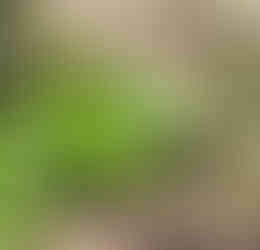Disease, Demonstrations, and....Godzilla?
- pgithens

- Jun 17, 2020
- 3 min read

Really 2020? Haven't we been through enough turmoil this year? First the pandemic, quarantine, and then demonstrations. Now it's Baby Godzilla? I know that there has been less traffic on the road and wildlife has become bolder in urban areas, but I did not think we were turning back time to the Mesozoic Era.
But he is so cute......
For those who are just joining us, we started a kitchen garden at the historic Covenhoven House in Freehold. We do open hearth cooking there twice a year for the public and school groups that come to visit. Our garden is based on plantings at Monticello, Thomas Jefferson's gardens. Since this is our first year, we are not expecting much in the way of produce yield, but we are improving the soil for future plantings.
From turning over the dirt for the garden to now, we have randomly found gifts in our garden from a mysterious visitor. First, the kewpie baby dolls. Then lollipops. Last week, it was a conga line of flamingos in the lettuce.

And, most recently, baby Godzillas. Four of them. One guarding the flax. A second sleeping under the shadow of the artichoke leaves. The third was found among the chewed pea plants. The final one is the guilty party who has been feasting on our sweet potato plants.
Our mystery gifts have us laughing and guessing, wondering what we will find next time we show up to weed and water.
Since Covenhoven House is on a busy road, we knew we wouldn't have to worry about deer. The problem is that we do have some critter chewing on some of the tender shoots. A ground hog or rabbit? We aren't sure, but we know we have to do something - we lost all 5 pea pods in the three days plus several beet plants and a few sweet potato plants.
We are considering several options to deter them. One option is predator scent in small vials to make the rodents think there are foxes or wolves around. Another option is a small picket fence, which, right now is not financially possible. We hate to see our hard work go to feeding the local "wildlife", but other suggestions would be welcome!
I bet that Thomas Jefferson never had to worry about flamingos and dinosaurs in his gardens, but we love them. So far, they haven't eaten much. He worried about the health of the plants, the freak late frost decimating pea plants or dry spells interfering with the plant growth, which are the same problems we face today.
One crop has surprised us with its rapid growth! The corn is doing splendidly! It's almost knee-high mid-June. We will hopefully get a decent yield of the Bloody Butcher dent corn that we planted. Why dent corn? Dent corn is the type of corn used to make grits, meal, flour, and brewers' grits used in beer production. Dry milling is used to produce these various products.
Another way corn was used in colonial America, and worth noting, is the traditional corn foods developed by the Aztecs and the Maya. WHAT???! The Continental Army didn't eat tortillas!!! No they didn't. It's complicated.
The corn kernels undergo a process called "nixtamalization", where the corn is soaked and cooked in a basic (alkaline) solution usually containing lime. This process makes essential nutrients such as niacin and tryptophan available for use by the body, and produces hominy, hominy grits, masa flour, tortillas, etc.
This process was developed a few thousand years ago in South and Central America, but did not accompany corn as it was picked up by explorers and brought from South and Central America to North America and eventually to Europe. The nixtamalization process that the Native Americans - most likely the Iroquois - taught the European settlers was forgotten. It doesn't sound like a big deal, but in 19th century America, the lack of this process caused pellagra - the chronic lack of niacin - throughout the South. Read more about it here.
When I read about situations like this - a long-lost process with affects generations later - I often wonder how did the Mayan culture - a primitive culture - develop this process? How did they learn that the nixtamalization process kept them healthy? How did the Europeans lose the process? Questions that probably will not be answered. How did the Egyptians figure out that the long flax stalks held such lovely fibers for wonderfully light clothing?

{That is our flax!!!!}
But, as I snack on my tortilla chips and guacamole in my linen shirt, I'm so glad we "found" it again. Right, Baby Godzilla?











